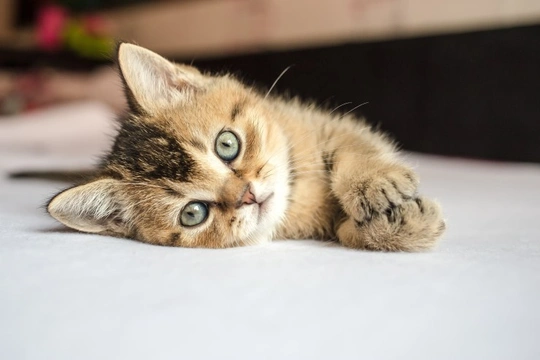
Dealing with fleas on young kittens
Kittens can become infested with fleas virtually as soon as they are born, and while fleas are easy to treat and resolve in older cats with a spot-on treatment or other method, few products are safe to use on very young kittens.
Additionally, whilst for most adult cats the occasional flea that is quickly treated is not usually a major problem, fleas on young kittens can have a significant impact on their health, wellness and development, leading to potential problems such as anaemia and flea bite sensitivities.
In this article, we will look at some of the options for dealing with fleas on very young kittens, and how to resolve the issue effectively and safely. Read on to learn more.
How do young kittens get fleas?
One old myth says that kittens can be born with fleas, but this is not true; however, if the queen has fleas or if there are fleas on other pets or soft furnishings in the home, kittens can catch fleas pretty much immediately after they are born.
It is wise to ensure that your queen is of course flea-free well before she has her litter, and as well as checking your pets themselves, make sure that your home is not harbouring an infestation or fleas in larvae form. If your whole home needs treating for fleas, this should not be done whilst the queen (or any other pets) are inside, and so it is best to do this as early in the pregnancy as possible.
However, if you have adopted a pregnant queen or find yourself with a cat that is expecting unexpectedly, as it were, you may not get the chance to do this before the litter is born.
The challenges with flea treatments in young kittens
Once kittens reach eight to twelve weeks of age, many of the most popular veterinary approved flea products can be used on them, and so the main issue when it comes to fleas occurs in kittens under eight weeks old, which is when a flea infestation is potentially the most risky.
However, virtually all effective flea treatment products contain an antiparasitic agent to kill fleas, which is not harmful to older cats but that can be too strong for young kittens, and so, this makes them inappropriate for treating tiny cats.
Tackling fleas in young kittens
Removing and reducing fleas from young kittens safely and effectively can be time consuming, and may require you to use a combination of a variety of approaches.
First things first, ensure that the room that the kittens are in is clear of fleas, which may mean that you will need to treat a specific room of the house with a flea bomb or something else to kill fleas at every life stage, and then move the litter and queen into that room. Treating the queen herself is important too, but take care to ensure that the flea product that you use is concentrated enough that it is effective but does not spread across her neck when wet, so that the kittens can rub against it.
Before you move the litter into the new room, give it 24 hours for the flea treatment used on the queen to take effect, and talk to your vet about the right product to use-a range of well-known brands can be used safely on nursing cats.
Next, use a flea comb to remove the individual fleas from each kitten, dipping the comb into a bowl of water regularly to remove and trap the fleas and stop them re-infesting the litter. Comb each kitten at least twice a day, and keep a check on the volume of fleas that you remove each time, to see how effective your regime is proving to be.
At night, you can set up a type of flea trap in the room where the litter sleeps-this is not generally one of the most effective ways of reducing flea infestations in the home when compared to proper treatments, but when you are limited in terms of options for small kittens, every little helps!
To set up a flea trap, get a large, shallow bowl of water and add a little washing up liquid to it to create some surface tension. Then, position an angled lamp over it, with the light aimed at the bowl, and turn it on. The bowl should be located near to the litter, and so, the fleas-but out of reach of the kittens, lest they fall into it or try to drink it.
At night when the other lights are out, the fleas will be attracted to the warmth and light, and fall into the bowl of water-where the surface tension caused by the washing up liquid will trap them for disposal the next day.
This helps to remove some of the fleas, and keep an eye on whether the infestation is lessening.
You may also need to bathe your kittens using a very gentle detergent (your vet can recommend one) to help to get rid of the fleas too. Ensure that you are very gentle, and dry the kittens thoroughly afterwards.



